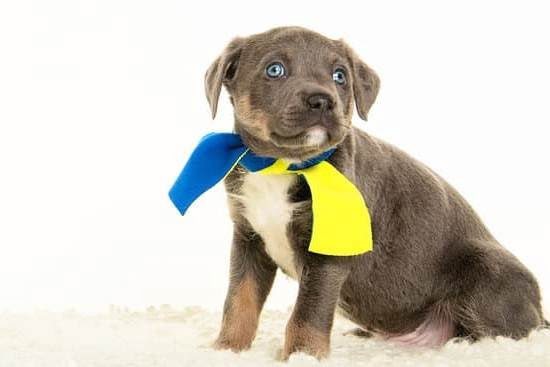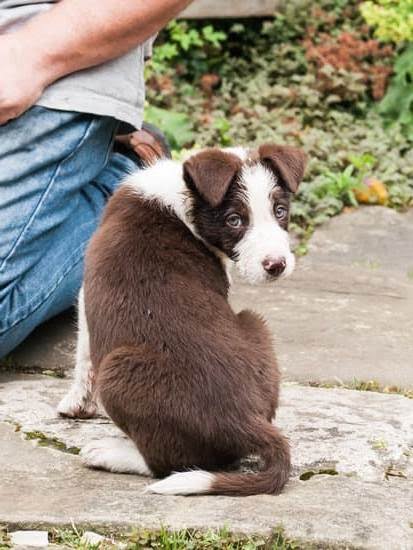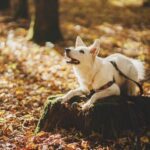Cadaver dogs, also known as human remains detection dogs, are specially trained canines used in forensic investigations to locate the scent of decomposing human remains. These highly skilled animals play a crucial role in assisting law enforcement agencies, search and rescue teams, and medical examiners in finding missing persons or identifying crime scenes.
With their remarkable olfactory abilities, cadaver dogs are responsible for detecting scents that are imperceptible to humans, making them valuable assets in solving mysteries and bringing closure to families.
The selection process for training cadaver dogs involves careful consideration of specific qualities and characteristics necessary for this specialized field. Not every dog is suited for this job; rather, particular breeds with a strong drive and desire to work lead the pack.
Additionally, adaptability, intelligence, fearlessness, sociability, and an eagerness to please their handlers are key traits that trainers look for when choosing potential candidates. From there, selected dogs undergo rigorous training programs designed to hone their abilities and develop the nose required for successful scent discrimination.
Before embarking on cadaver training, these canine detectives must master basic obedience commands. This foundation acts as a starting point that enables handlers to have effective control over the dogs during search operations. Sit, stay, come, heel-these basic commands lay the groundwork necessary for more advanced training exercises. Moreover, obedience training helps build trust between handler and dog-a critical aspect when working together in high-pressure situations.
Cadaver dogs prove time and again their worth in forensic investigations by uncovering vital evidence that might otherwise go unnoticed. By understanding what cadaver dogs are trained to do and appreciating the importance of their contributions within forensic science, we gain a greater respect for these incredible canines who relentlessly work to solve mysteries and bring justice where it is due.
The selection process
Cadaver dogs play a crucial role in forensic investigations, using their highly developed sense of smell to locate and indicate the presence of human remains. However, not every dog is suitable for this specialized training. The selection process for cadaver dogs is rigorous and involves thorough evaluation of specific qualities and characteristics that are needed for success in this important field.
One of the most important qualities that trainers look for in potential cadaver dogs is a strong drive to search and hunt. These dogs should possess an innate desire to locate objects or targets, as this drive will be essential when searching for human remains. Additionally, they should exhibit a high level of focus and determination, remaining undeterred by distractions or challenging environments.
Another crucial characteristic necessary for cadaver dog candidates is a stable temperament. These dogs need to remain calm and composed in various situations, including stressful or emotionally charged environments. They should also be able to work independently without constant reassurance from their handlers.
Physical attributes are also considered during the selection process. Cadaver dogs typically have a strong sense of smell, but certain breeds may have an advantage due to their natural olfactory capabilities. Breeds such as German Shepherds, Labrador Retrievers, and Belgian Malinois are often preferred for their exceptional scent detection abilities.
| Qualities | Characteristics |
|---|---|
| Strong search drive | Innate desire to locate objects or targets |
| Stable temperament | Able to remain calm in stressful situations |
| Exceptional sense of smell | Natural olfactory capabilities |
Once potential candidates with these qualities and characteristics are identified, they undergo a series of tests and evaluations. This can include assessments of their search ability, trainability, and scent detection aptitude. Trainers may also evaluate the dog’s physical health and overall suitability for the demanding nature of cadaver dog work.
The selection process aims to identify dogs that have the best potential to excel in cadaver detection work. Through careful assessment of qualities, characteristics, and aptitudes, trainers ensure that only the most suitable candidates move forward in the training program. This thorough selection process plays a crucial role in building a team of well-trained and reliable cadaver dogs who can make a significant impact in forensic investigations.
Basic obedience training
Before cadaver dogs can begin their specialized training in detecting decomposing human remains, they must first undergo basic obedience training. This foundation is crucial in preparing them for the more advanced skills they will acquire during their cadaver training. The importance of basic obedience cannot be overstated, as it lays the groundwork for effective communication between the handler and the dog, ensuring a successful partnership in forensic investigations.
During basic obedience training, cadaver dogs learn a set of specific commands that are essential for their work. These commands include “sit,” “stay,” “down,” “come,” and “heel.” Mastering these commands is vital for maintaining control and focus in various situations.
For example, the command to “sit” ensures that the dog remains stationary when necessary, while “stay” ensures that they do not move from a particular position until given another command. These commands are especially critical in scenarios where precision and discipline are essential to carry out effective searches.
In addition to learning these fundamental commands, cadaver dogs also develop skills in leash walking, socialization with other people and animals, and impulse control. Leash walking enables handlers to guide the dogs through search areas without distractions or unwanted behavior.
Socialization is important so that cadaver dogs can work effectively with other members of search teams or interact appropriately with witnesses and family members during investigations. Lastly, impulse control teaches cadaver dogs to resist distractions and impulses that may interfere with their ability to focus on locating human remains.
By completing basic obedience training, cadaver dogs establish a strong behavioral foundation upon which their more specialized training can be built. This training helps build trust between handler and dog while providing the necessary discipline for effective performance in high-pressure situations. Through this process, these highly skilled canines become reliable tools in forensic investigations.
| Commands | Description |
|---|---|
| Sit | The dog remains stationary in a sitting position until given another command. |
| Stay | The dog maintains its position and does not move until released or given another command. |
| Down | The dog lies down on the ground and remains in that position until given another command. |
| Come | The dog moves toward the handler on command, typically returning to the handler from a distance. |
| Heel | The dog walks calmly by the handler’s side, maintaining a specific position without pulling or veering off track. |
Scent discrimination training
Cadaver dogs are specifically trained to detect the scent of decomposing human remains, which is a crucial skill in forensic investigations. This section will delve into the process of scent discrimination training for cadaver dogs, exploring how they are taught to distinguish the unique odor of decomposing human remains from other scents.
During scent discrimination training, trainers use various techniques and tools to help cadaver dogs differentiate between different smells. One common method is using scent boxes or containers that hold samples of decomposing human tissue or decomposition gases. These scent boxes are strategically placed among other distractions, such as animal remains or food, to challenge the dog’s ability to pinpoint the exact source of the target scent.
To ensure that cadaver dogs do not associate other smells with their reward, trainers employ a reward-based system focused solely on indicating the presence of human remains. This means that when a cadaver dog successfully identifies the target scent, they receive a reward or positive reinforcement exclusively for alerting to human decomposition odors. By conditioning them with this association, trainers help reinforce their ability to discriminate between scents accurately.
Another tool used in scent discrimination training is pseudoscents, which mimic the smell of decomposing human remains without any actual biological material present. Trainers may introduce these pseudoscents during the training process to further fine-tune a cadaver dog’s ability to differentiate between various scents and focus solely on indicating true positive results.
In addition to these techniques and tools, trainers also rely on systematic approaches such as shaping behavior through positive reinforcement and gradually increasing difficulty levels as the dog progresses in their training. Through repetition and consistent exposure to different sources of decomposition odor, cadaver dogs develop an acute sense of smell and an ability to distinguish even trace amounts of human remains amidst complex environments.
By providing insight into how cadaver dogs are trained to distinguish the specific scent of decomposing human remains from other scents, this section sheds light on one of the most critical aspects of their specialized training. Their remarkable ability to identify these odors in various forensic settings is invaluable to investigators and plays a significant role in solving crimes, locating missing persons, and providing closure for families.
Introduction to the scent of decomposition
Cadaver dogs are a vital tool in forensic investigations, as they possess the unique ability to locate decomposing human remains. However, it is essential for trainers to introduce cadaver dogs gradually to the scent of decomposition to prevent them from becoming overwhelmed or distressed during actual searches.
Trainers employ a strategic approach when acclimating cadaver dogs to the scent of decomposition. They start by using synthetic compounds that mimic the odor of decomposing human remains. By exposing the dogs to these synthetic scents in controlled environments, trainers can gauge their reactions and determine whether they have potential as cadaver dogs.
Once the initial exposure phase is successful, trainers progress to utilizing real scent sources. These sources may range from bone fragments and teeth with decomposed tissue to donated human bodies that have been used for scientific research purposes. By slowly increasing the intensity and duration of exposure, cadaver dogs develop a tolerance for the strong odor associated with decomposition.
During this process, handlers employ positive reinforcement techniques such as praise or treats whenever a dog exhibits appropriate responses or behaviors towards the scent of decomposition. This conditioning helps associate the smell with a positive outcome, further encouraging and strengthening their ability to detect decomposed remains.
Practical training exercises
Practical training exercises play a crucial role in the development of cadaver dogs’ skills and confidence. By introducing the dogs to different scenarios and settings, trainers can prepare them for real-life search situations. These exercises expose the dogs to a variety of environments where human remains may be concealed, ensuring that they are well-prepared for any situation they may encounter.
Indoor locations
Cadaver dogs are often trained to search indoor locations such as buildings and structures. In these scenarios, trainers hide scent sources or simulate crime scenes to provide realistic conditions for the dogs to work in. This type of training helps the dogs learn how to navigate confined spaces, identify subtle scents, and search systematically.
Open fields
Open fields provide an ideal setting for cadaver dog training as they mimic outdoor crime scenes or areas where remains may be located. Trainers strategically place scent sources throughout the field, testing the dog’s ability to detect specific scents among distractions in a wide open space. This type of training teaches the dogs how to work independently, cover large areas efficiently, and make accurate indications when they locate a scent source.
Forests
Forests present unique challenges for cadaver dogs as there are numerous scents and elements that can interfere with their searches. Training exercises conducted in forested areas help develop the dog’s ability to isolate and detect human remains among various natural smells found in woodland environments. The thick vegetation and uneven terrain also require the dog to navigate obstacles effectively while remaining focused on their task.
Bodies of water
Water poses additional challenges for cadaver dogs due to scent dispersion and environmental factors such as currents and wind direction. Training near bodies of water allows the dogs to become familiar with detecting submerged or partially submerged human remains. Trainers use specialized tools like scent buoys or floating objects containing human decomposition odor to simulate real-life scenarios. This training helps the dogs learn how to differentiate between various scents and locate remains in aquatic environments.
Through these practical training exercises, cadaver dogs develop the necessary skills and confidence to perform their vital role in forensic investigations. The varied settings and scenarios ensure that the dogs are well-rounded and adaptable, capable of detecting human remains in a wide range of conditions.
With each exercise, strengths are reinforced, weaknesses are addressed, and the bond between handler and dog grows stronger. By diligently exposing cadaver dogs to different search environments, trainers can help ensure their success when called upon for real-life searches.
Reinforcement and maintenance training
Reinforcement and maintenance training play a crucial role in ensuring that cadaver dogs remain sharp, reliable, and effective in their work. To maintain their skills, these specialized canines require ongoing training and regular exposure to fresh scent sources. Additionally, periodic reevaluation helps assess their proficiency and identify any areas that may need improvement.
Continued Exposure to Fresh Scent Sources
To keep cadaver dogs at the top of their game, trainers provide them with continuous exposure to fresh scent sources. This means regularly introducing the dogs to decomposing human remains so they can refine their scent discrimination abilities. Trainers often use controlled decomposition sites or specially designed training aids containing decomposition scents to simulate real-life search scenarios.
Periodic Reevaluation
Just like any other skill, cadaver dogs’ proficiency levels need to be periodically assessed. Through reevaluation, trainers can determine how well the dogs are retaining their training and locate any areas that might require additional work. During these assessments, dogs are exposed to hidden or simulated odor sources to evaluate their accuracy in alerting handlers to the presence of human remains.
Moreover, periodic reevaluations also help identify if a dog’s performance is declining due to age-related factors or health issues. If necessary, retired cadaver dogs can receive supportive care while new candidates are selected for training.
Overall, reinforcement and maintenance training ensure that cadaver dogs stay sharp and reliable throughout their careers. By providing continued exposure to fresh scent sources and undergoing periodic reevaluations, these canine investigators can continue making valuable contributions to forensic investigations.
Case studies and success stories
Cadaver dogs have proven to be indispensable assets in numerous real-life forensic investigations, playing a crucial role in uncovering important evidence and bringing closure to families who have lost loved ones. The unique abilities and specialized training of these remarkable canines have resulted in several notable success stories that highlight their invaluable contributions.
One such case is the disappearance of a young girl named Sarah, who had been missing for over a week. Despite extensive search efforts by human search teams, there were no signs of her whereabouts. It was then that a cadaver dog named Apollo was brought in for assistance.
After just a few minutes on the scene, Apollo indicated an area near a wooded trail, leading investigators to the discovery of Sarah’s remains. His ability to respond to the scent of decomposition allowed law enforcement to locate crucial evidence and ultimately bring justice to Sarah’s family.
In another remarkable instance, cadaver dogs played a pivotal role in solving a historical mystery that had remained unsolved for decades. The case involved the disappearance of an aviator who went missing during an attempt at crossing the Atlantic Ocean solo.
Years later, when his wreckage was finally discovered underwater, cadaver dogs were employed to assist in retrieving any possible human remains. Guided solely by their highly trained sense of smell, the dogs were able to locate scattered bone fragments amidst the vast debris field, allowing for proper identification and closure for the aviator’s family after all those years.
These are just two examples among many where cadaver dogs have provided critical assistance in forensic investigations. Their specialized training enables them to detect even minute traces of decomposing human remains that are crucial for solving crimes or locating missing persons. By employing these exceptionally skilled canines alongside traditional search methods, law enforcement agencies have significantly increased their chances of success in locating evidence and obtaining justice.
The success stories of cadaver dogs illustrate the immense value they bring to forensic investigations. These incredible canines have proven time and again that their specialized training is a powerful tool for solving mysteries, bringing closure to families, and helping law enforcement agencies achieve justice.
Their contributions serve as a testament to the unwavering dedication of trainers and handlers who invest significant time and effort in cultivating the skills of these remarkable animals. With each case they assist in, cadaver dogs continue to solidify their indispensable role in forensic investigations.
Conclusion
In conclusion, cadaver dogs play a crucial role in forensic investigations and are indispensable to law enforcement agencies around the world. These highly skilled canines possess unique abilities that aid in locating human remains, which is vital for solving crimes and bringing closure to families. The dedication required to train and maintain cadaver dogs cannot be understated, as it demands time, patience, and expertise.
The specialized training process begins with a meticulous selection process, where dogs with specific qualities and characteristics are chosen. Basic obedience training serves as the foundation for cadaver training, ensuring that these dogs have the necessary discipline and focus to carry out their tasks effectively. This includes mastering specific commands that enable them to search designated areas efficiently.
Scent discrimination training is another crucial aspect of preparing cadaver dogs for their role. Through various techniques and tools, they learn to distinguish the scent of decomposing human remains from other scents present at crime scenes. Moreover, gradual exposure to the scent of decomposition helps prevent overwhelming or distressing situations during actual searches.
Cadaver dogs undergo practical training exercises in different scenarios and settings such as indoor locations, open fields, forests, and bodies of water. These exercises help build their skills and confidence by allowing them to adapt their search techniques according to the environment they are presented with. Reinforcement and maintenance training are essential components as well, keeping cadaver dogs sharp and reliable through continued exposure to fresh scent sources and periodic reevaluation.
Countless case studies provide evidence of how invaluable cadaver dogs’ contributions have been to forensic investigations. These dogs have played a significant role in discovering crucial evidence and aiding in solving mysteries that may otherwise remain unsolved. Their abilities bring closure to grieving families who have long awaited answers and contribute greatly towards achieving justice.
Frequently Asked Questions
What breeds make the best cadaver dogs?
The breeds that are often considered the best for cadaver dogs are typically those with a strong sense of smell, high energy levels, and a keen drive to work. Some popular breeds include German Shepherds, Labrador Retrievers, Belgian Malinois, and Bloodhounds. German Shepherds are known for their intelligence and trainability, making them excellent candidates for this type of work. Labrador Retrievers also have exceptional scent detection abilities and are highly motivated by rewards.
Belgian Malinois possess great agility and focus, making them well-suited for search and rescue tasks. Finally, Bloodhounds have an extraordinary sense of smell and are specifically bred for tracking scents over long distances. Ultimately, the best breed may depend on specific factors such as the environment in which they will be working or the type of search operations they will be involved in.
What scent is used to train cadaver dogs?
The most commonly used scent to train cadaver dogs is human decomposition odor, often referred to as “cadaver scent.” This odor is a complex mixture of chemicals emitted during the breakdown of organic matter after death occurs.
Although it can vary depending on various factors like environmental conditions or time since death, trained professionals use synthetic versions or actual decomposed human remains to expose cadaver dogs to this scent during training. By repeatedly practicing locating this specific odor source through various exercises and scenarios, cadaver dogs develop the ability to detect even minute traces of human decomposition odor.
Can cadaver dogs smell old bodies?
Yes, cadaver dogs are capable of smelling old bodies due to their remarkable olfactory capabilities. These highly trained canines possess up to 300 million olfactory receptors in their noses compared to humans’ mere 6 million receptors. This exceptional sense of smell enables them to detect scents that are beyond our range of perception.
Older decomposed bodies release different chemical compounds compared to fresher remains due to advanced stages of decay or natural processes occurring over time. However, despite changes in odor composition, cadaver dogs have demonstrated the ability to track and alert to the scent of decomposed human remains even when they are significantly degraded or have been exposed to environmental factors for an extended period of time.

Welcome to the blog! I am a professional dog trainer and have been working with dogs for many years. In this blog, I will be discussing various topics related to dog training, including tips, tricks, and advice. I hope you find this information helpful and informative. Thanks for reading!





